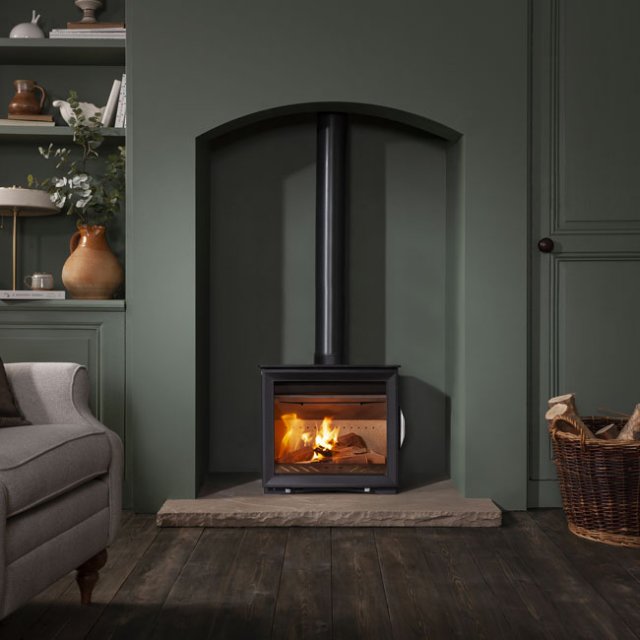0121 271 0221

The Beginners Guide to Wood Burning Stoves
You’re thinking of buying a wood-burning stove or perhaps you’ve already bought one and now you’re faced with the task of actually getting it to work. Like most things in life, it’s easy once you know how.
So, in this article we’ll talk you through the very basics of being a wood-burning stove owner and aim to answer some of the questions you’re too embarrassed to utter aloud.
The buyer’s guide
Make sure you get a stove that’s going to do the job you want it to do. Use our heat calculator to make sure you’re going to get the correct heat output. Too small and you’ll still want the central heating on, too big and you’ll be sweltering.
Getting to know your stove
Open the door of your stove. The part inside is called the firebox (easy enough to remember). Above and below the glass of most stove you’ll see air vents. The bottom one is the primary air vent, the top one is secondary. These allow you to control the air supply to the stove, which in turn controls how fast your fuel burns.
Contrary to what some beginner’s think, once your stove is lit that’s the only air supply you’ll need: the door should usually be kept closed (unless your stove manual says differently). Unlike an open fire, you’re not supposed to get heat from the flames. Instead, the flames heat the metal panel of your stove, which heat the whole room.
The pipe coming out of the wood burner is called the flue, which is basically another word for a chimney.
How to light a wood-burning stove
Unsurprisingly this is the biggest topic of debate among stove newbies. Just how do you get that thing to produce some heat? It’s such an important subject that we devoted an entire article to teaching you how to light your wood-burning stove.
In summary, you need to leave the right amount of ashes in the stove, open both air vents, crumple up some newspaper, add some kindling or small pieces of wood and light your stove. Once the kindling is starting to burn well you can add your fuel.
What to burn
First, it’s important to determine whether you have a wood-burning stove or a multi-fuel stove. Wood burners have flatbeds on which to load fuel, while multi-fuel stoves have grates. This is because coal and smokeless equivalents need an air supply from beneath the fuel. You can put wood on a multi-fuel stove, but you can’t put coal on a wood-burning stove.
You can use any wood that hasn’t been varnished or treated on your stove. Ideally the wood should be seasoned. That means it’s been cut and left to dry for at least a year, allowing moisture to evaporate and providing a more efficient burn as a result.
We’ve gone into more detail on the types of fuel you should use in this blog post.
Staying safe
To ensure your safety from the outset, make sure you use a HETAS approved installer to fit your stove. They will spot any problems and ensure the installation is completed safely. You should also get a carbon monoxide detector for peace of mind.
Apart from remembering not to touch your stove when it’s hot, your other main safety consideration is to get your chimney swept at least once a year. This prevents build-up of creosote and soot that can lead to chimney fires. Using seasoned wood, as mentioned above, also helps prevent creosote deposits.
If you’ve got any other questions, you can give us a call on the number at the top of the page or send us a message.
